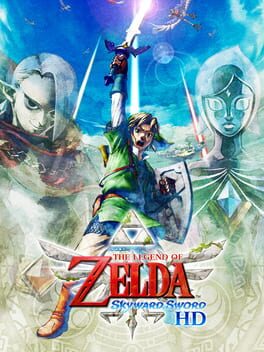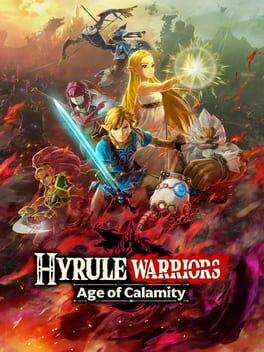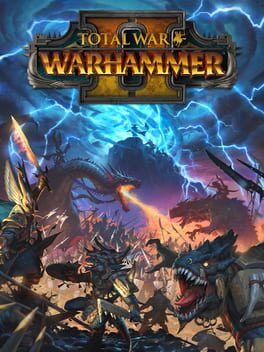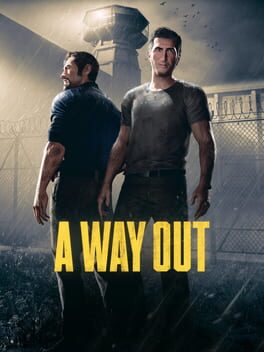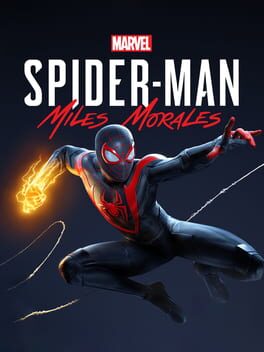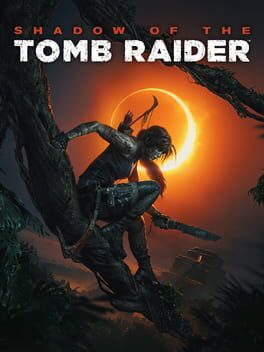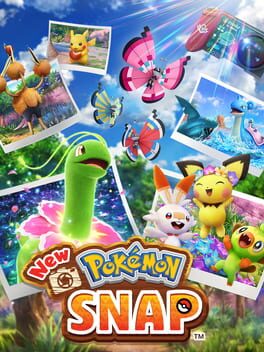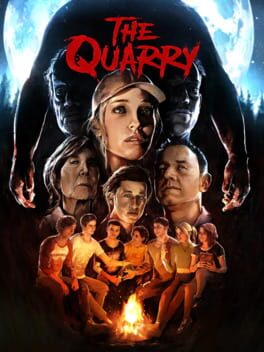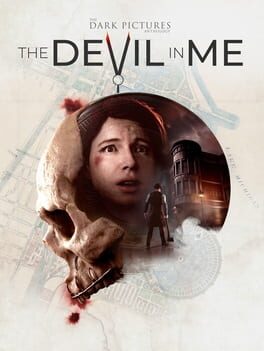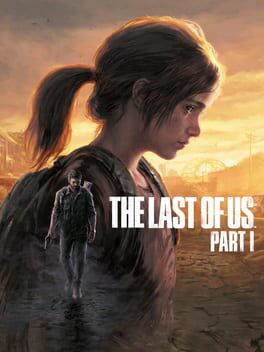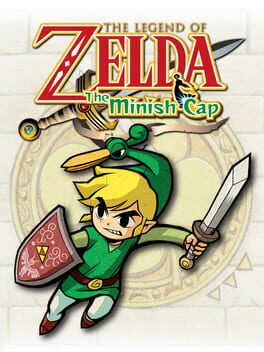Turbo_Sven
BACKER
A slight improvement over the original that mostly comes down to the fact that motion controls is now optional. And thank the gods for that! Motion controls were a fun idea but have, in my opinion, never been implemented well in any game. So the option to play the game with a normal controller is a more than welcome change. Although using the analog stick to swing your sword, instead of your arm, is a bit awkward.
The rest of the game is more or less the same as the original, warts and all. The game starts out fine and has a nice pace throughout the games three main areas with some interesting mechanics and dungeons here and there. The main problem with the game is the repetitive nature of it's overarching gameplay loop. The three main areas in the game are interesting and fun the first time around, but then you have to backtrack through all the areas again and again. Each time you return to an area the objectives become less fun and more arbitrary. It makes the experience frustrating and time consuming for the sake of a longer runtime. During the third act of the game I was honestly just powering through in order to finish the game already.
The idea behind the world design is really good in theory. Skyloft is one of the most beautiful and cozy hubworlds in all the Zelda games. And the idea of traveling through the cloud barrier to touch down on different areas on the surface is exhilarating. But the lack of interesting characters and side-quests, as well as the slow travel times (seriously, how did they manage to make the act of soaring through the sky so slow and boring?), make Skyloft a bore that you only really visit when it's necessary.
There is a lot of objectives (like fetch-quests) throughout the game that forces you to travel to the other areas of the game. Now the travel time between one area to the other is a frustrating slog. I don't understand why they didn't add a fast travel system to this version of the game. It would've at least made the arbitrary processes less annoying.
While the Switch version of Skyward Sword stands above it's original predecessor, it's not by a large margin. With the exclusion of motion controls Nintendo fixed one major issue but left all the other ones untouched. As a Zelda fan I enjoy large sections of the game and despise others. Overall it's a good game, although with some major flaws, and this version stands as the definitive edition of the game. It's a shame that the game itself is such an uneven experience.
The rest of the game is more or less the same as the original, warts and all. The game starts out fine and has a nice pace throughout the games three main areas with some interesting mechanics and dungeons here and there. The main problem with the game is the repetitive nature of it's overarching gameplay loop. The three main areas in the game are interesting and fun the first time around, but then you have to backtrack through all the areas again and again. Each time you return to an area the objectives become less fun and more arbitrary. It makes the experience frustrating and time consuming for the sake of a longer runtime. During the third act of the game I was honestly just powering through in order to finish the game already.
The idea behind the world design is really good in theory. Skyloft is one of the most beautiful and cozy hubworlds in all the Zelda games. And the idea of traveling through the cloud barrier to touch down on different areas on the surface is exhilarating. But the lack of interesting characters and side-quests, as well as the slow travel times (seriously, how did they manage to make the act of soaring through the sky so slow and boring?), make Skyloft a bore that you only really visit when it's necessary.
There is a lot of objectives (like fetch-quests) throughout the game that forces you to travel to the other areas of the game. Now the travel time between one area to the other is a frustrating slog. I don't understand why they didn't add a fast travel system to this version of the game. It would've at least made the arbitrary processes less annoying.
While the Switch version of Skyward Sword stands above it's original predecessor, it's not by a large margin. With the exclusion of motion controls Nintendo fixed one major issue but left all the other ones untouched. As a Zelda fan I enjoy large sections of the game and despise others. Overall it's a good game, although with some major flaws, and this version stands as the definitive edition of the game. It's a shame that the game itself is such an uneven experience.
I played through the game together with my girlfriend and so I can't really say anything about the singleplayer experience. But the game suffers from some performance issues so severe that I doubt the game runs much smoother in singleplayer. If you're not ok with playing a game that rarely manages to put out a stable 30fps, then maybe this peticular game is not for you.
Performance issues aside tho, it's a somewhat solid game that tries to walk in the same footsteps as it's predecessor, but doesn't fill the shoes all that well. The first Hyrule Warriors was better paced and the maps were better designed than in Age pf Calamity. In the first Hyrule Warriors the maps where designed with connectivity in mind where each road and outpost led to other roads and outposts. This brought a nice flow to how you moved around the maps. In Age of Calamity a lot of outposts are situated at dead ends with narrow passageways which disrupts the general flow of movement in the game and makes to maps unclear and difficult to navigate.
Overall it's a slightly lukewarm successor to the superior Hyrule Warriors that starts to drag quite a bit in the later half of the game, especially towards the end. To be honest, if it weren't for my girlfriends companionship I probably wouldn't have gotten through the entirety of it. Good company really does make any situation bearable, huh.
Performance issues aside tho, it's a somewhat solid game that tries to walk in the same footsteps as it's predecessor, but doesn't fill the shoes all that well. The first Hyrule Warriors was better paced and the maps were better designed than in Age pf Calamity. In the first Hyrule Warriors the maps where designed with connectivity in mind where each road and outpost led to other roads and outposts. This brought a nice flow to how you moved around the maps. In Age of Calamity a lot of outposts are situated at dead ends with narrow passageways which disrupts the general flow of movement in the game and makes to maps unclear and difficult to navigate.
Overall it's a slightly lukewarm successor to the superior Hyrule Warriors that starts to drag quite a bit in the later half of the game, especially towards the end. To be honest, if it weren't for my girlfriends companionship I probably wouldn't have gotten through the entirety of it. Good company really does make any situation bearable, huh.
Without a single doubt the best total war game Creative Assembly has ever produced. The only reason for retiring this game is the release of the next and final installment in the trilogy. After 5 amazing years, with the game getting progressively better for each dlc and update released, it is finally time to lay this absolute beast of a game to rest. The king is dead, long live the king.
2018
It's a nice quick little co-op experience that thankfully is as short as it is bland. If it weren't for it's speedy conclusion, as well as the fact that you have to play it with a friend, my rating of the game would have gone way down.
The story is very generic and the main characters are basically two wooden planks trying to emote like humans. Gameplay wise there is a wide variety of half-baked stuff that the game commands you to do.
I get that the story dictates the game's structure to be very strict. Meaning that every objective is fixed and the choices the game offers you are fake as the results are always the same. But personally I would have liked more freedom in how you go about achieving the objectives given to you by the game.
For example, instead of giving the players a puzzle with a single solution; utilize a sandbox approach to the puzzle by giving the players multiple tools to achieve their goals. This would make the gameplay more engaging and it would enhance the cooperative gameplay by actually making the players work together and discuss possible solutions.
At the end of the day, or evening considering the games 6 hour runtime, it's a nice little game to play with a friend someday. As with all things, no matter how boring, you can make anything fun with the right friend by your side.
The story is very generic and the main characters are basically two wooden planks trying to emote like humans. Gameplay wise there is a wide variety of half-baked stuff that the game commands you to do.
I get that the story dictates the game's structure to be very strict. Meaning that every objective is fixed and the choices the game offers you are fake as the results are always the same. But personally I would have liked more freedom in how you go about achieving the objectives given to you by the game.
For example, instead of giving the players a puzzle with a single solution; utilize a sandbox approach to the puzzle by giving the players multiple tools to achieve their goals. This would make the gameplay more engaging and it would enhance the cooperative gameplay by actually making the players work together and discuss possible solutions.
At the end of the day, or evening considering the games 6 hour runtime, it's a nice little game to play with a friend someday. As with all things, no matter how boring, you can make anything fun with the right friend by your side.
Finally a good Mario Party game on the Switch! The last Mario Party game was passable at best with boring boards and frustrating minigames designed around annoying motion controls. This time around Nintendo has redeemed themselves. The mixture of boards/minigames from earlier titles brings a lot of the best from the entire franchise, while at the same time eliminating motion controls. It's a really nice balance of fun and nostalgia that will make you hate your friends. Which is all you want in a Mario Party game, isn't it?
Being a standalone expansion to Marvel's Spider-Man from 2018, this game delivers more or less the same as it's predecessor. Which for me isn't a bad thing since I really liked the last game. Marvel's Spider-Man, in my opinion, gave us the quintessential Spider-Man gaming experience. So to get more of that sweet webslinging action is great in my book.
Though it would have been nice to see some interesting changes to the game to make it feel more like Miles Moralis' version. They did try to do this with the implementation of the venom mechanic and the camouflage. But the venom mechanic feels a little underdeveloped and I would have like it to be more engaging rather then being a simple damage boost to your attacks. The camouflage is nice but sadly not really utilized since there's not a whole lot of moments where you would actually need it. It feels more like a luxury gimmick that's tacked on to bring more Moralis flavor to the game.
All in all it's a good game! The gameplay is pretty much the same and the story is fine, but I prefer the story in the last game. If you enjoyed the last game and want to swing around the streets of New York again, then this is the game for you! But I would recommend waiting for a sale before buying it.
Though it would have been nice to see some interesting changes to the game to make it feel more like Miles Moralis' version. They did try to do this with the implementation of the venom mechanic and the camouflage. But the venom mechanic feels a little underdeveloped and I would have like it to be more engaging rather then being a simple damage boost to your attacks. The camouflage is nice but sadly not really utilized since there's not a whole lot of moments where you would actually need it. It feels more like a luxury gimmick that's tacked on to bring more Moralis flavor to the game.
All in all it's a good game! The gameplay is pretty much the same and the story is fine, but I prefer the story in the last game. If you enjoyed the last game and want to swing around the streets of New York again, then this is the game for you! But I would recommend waiting for a sale before buying it.
2013
For a game that spends a lot of time talking about the sacrifices that needs to be done in order to survive, it sure does nothing to explore the emotional trauma and ramifications that comes with it. After Lara makes her first kill she reflects on how suprisingly easy it was for two seconds and then goes Rambo on the entire islands population for the next 12 or so hours. It's hard to take the game seriously when it faintly dabbles in moral dilemmas while also going on a murder spree without batting an eye.
Now since I played this 9 years after release, I can safely say that while it on a technical level held up better than I expected, it still showed it's age just slightly. It had some perfomance issues as it struggled a lot to hold a steady framerate. The animations where also very janky and lacked the overall realistic polish that most modern games have today. I swear, during some segments it felt like someone was fast-forwarding Lara's animations as she was speeding through her animations like she was Sonic.
It's a decent game that doesn't do a whole lot out of the ordinary. It plays it pretty safe and delivers a decently enjoyable adventure. The characters are about as thin as Lara Croft's original waist from the 90's and only acts as objectives for you to save. It's a pretty basic game that tries to be deep and morally complex while at the same time being fueled by loud explosions and joyous violence that drowns out all attempts at deep emotional reflection. Don't think, just shoot and have fun.
Now since I played this 9 years after release, I can safely say that while it on a technical level held up better than I expected, it still showed it's age just slightly. It had some perfomance issues as it struggled a lot to hold a steady framerate. The animations where also very janky and lacked the overall realistic polish that most modern games have today. I swear, during some segments it felt like someone was fast-forwarding Lara's animations as she was speeding through her animations like she was Sonic.
It's a decent game that doesn't do a whole lot out of the ordinary. It plays it pretty safe and delivers a decently enjoyable adventure. The characters are about as thin as Lara Croft's original waist from the 90's and only acts as objectives for you to save. It's a pretty basic game that tries to be deep and morally complex while at the same time being fueled by loud explosions and joyous violence that drowns out all attempts at deep emotional reflection. Don't think, just shoot and have fun.
This review contains spoilers
Rise of the Tomb Raider is a clear improvement over Tomb Raider (2013) in almost every way possible. It's a fun and wild action adventure that takes you through enemy infested soviet installations to ice covered tombs filled with simple but enjoyable puzzles. Only this time around it really doubles down on the stealth portion of the game, which the game's predecessor was severely lacking. This time you really get the opportunity to go full Siberian predator on you enemies, as you silently jump from branch to branch among the trees in order to stalk your unsuspecting prey. It's rare to be able to clear out an entire area without being spotted, since the enemy sometimes seems to be hard coded to find you no matter what. But you still have a much better chance to at least level the playing field a bit before guns are needed.
The gunplay is more or less the same as the last one, with just the addition of some new weapons for you to choose from. But the new and improved animations makes the combat feel much more weighted and impactful. The enemies no longer goofily flail about like bouncing ragdolls when they die. Now they feel like actual objects with weight behind them. Sure, the physics and animation is not as well crafted as in for example Red Dead Redemption 2, but it's a giant step in the right direction.
While the gameplay is vastly improved, the story still falls a little bit short. The main difference in my opinion is the characters. The characters in the first game was as bland and tasteless as McDonald's food. In Rise of the Tomb Raider they are a bit more fleshed out, with motivations that are part personal and interesting, and part cliché and boring. The writers also learned how to explore the central themes of their own story this time, to some extent at least. Last time they tried to do this gritty story about the hardships of survival and the moral lines that has to be crossed, without ever contemplating about the ramifications of actually crossing those lines. This time they actually do contemplate the actions and overall goals of their quest, but it's all based on the same cliches that usually plague these types of archaeological action adventure stories with supernatural elements. As in they usually just end up with the same conclusion: the powerful and supernatural artifact, that we have spent the entire journey trying to find, is ultimately better off left hidden to save the world. It's an improvement over the last game's story, but it's still a story that we have heard a thousand times already. Thank the gods that the gameplay at least got a huge improvement.
The gunplay is more or less the same as the last one, with just the addition of some new weapons for you to choose from. But the new and improved animations makes the combat feel much more weighted and impactful. The enemies no longer goofily flail about like bouncing ragdolls when they die. Now they feel like actual objects with weight behind them. Sure, the physics and animation is not as well crafted as in for example Red Dead Redemption 2, but it's a giant step in the right direction.
While the gameplay is vastly improved, the story still falls a little bit short. The main difference in my opinion is the characters. The characters in the first game was as bland and tasteless as McDonald's food. In Rise of the Tomb Raider they are a bit more fleshed out, with motivations that are part personal and interesting, and part cliché and boring. The writers also learned how to explore the central themes of their own story this time, to some extent at least. Last time they tried to do this gritty story about the hardships of survival and the moral lines that has to be crossed, without ever contemplating about the ramifications of actually crossing those lines. This time they actually do contemplate the actions and overall goals of their quest, but it's all based on the same cliches that usually plague these types of archaeological action adventure stories with supernatural elements. As in they usually just end up with the same conclusion: the powerful and supernatural artifact, that we have spent the entire journey trying to find, is ultimately better off left hidden to save the world. It's an improvement over the last game's story, but it's still a story that we have heard a thousand times already. Thank the gods that the gameplay at least got a huge improvement.
My journey through the Tomb Raider trilogy has come to it's end, and it's been quite the adventure. The trilogy started out a little bumpy with Tomb Raider (2013), but then eventually found it's stride with Rise of the Tomb Raider, which was a vast improvement over it's predecessor. In the end it all ended on a high note with Shadow of the Tomb Raider which followed directly in the footsteps of it's predecessor with some slight improvements.
Overall, I would say that Rise of the Tomb Raider and Shadow of the Tomb Raider are equals, if it weren't for some small things that nudges Shadow of the Tomb Raider slightly above it's main competitor. The game does pretty much all that it's predecessor does, but with some small additions to the gameplay that add some more flavour and variety. The mud concealment mechanic for example doesn't really do much on a mechanical level, but it finally adds that ferocious jungle predator vibe that I was longing for in Tomb Raider (2013), but misleadingly never got. The biggest addition though is the underwater segments that are a bit of a double edged sword. It brings a new dynamic to the world which is often visually stunning to explore, but with some slightly cumbersome controls that brings the experience down a bit. Especially when you combine the controls with subpar underwater stealth segments that involve piranhas that are frustratingly enough one-hit kills.
So that's it for the Tomb Raider trilogy. As I said in the beginning of this review, which incidentally happens to also be the name of the trophy I got for completing the game; it was quite the adventure. Not perfect, but a nice adventure nonetheless (as long as you skip the first game).
Overall, I would say that Rise of the Tomb Raider and Shadow of the Tomb Raider are equals, if it weren't for some small things that nudges Shadow of the Tomb Raider slightly above it's main competitor. The game does pretty much all that it's predecessor does, but with some small additions to the gameplay that add some more flavour and variety. The mud concealment mechanic for example doesn't really do much on a mechanical level, but it finally adds that ferocious jungle predator vibe that I was longing for in Tomb Raider (2013), but misleadingly never got. The biggest addition though is the underwater segments that are a bit of a double edged sword. It brings a new dynamic to the world which is often visually stunning to explore, but with some slightly cumbersome controls that brings the experience down a bit. Especially when you combine the controls with subpar underwater stealth segments that involve piranhas that are frustratingly enough one-hit kills.
So that's it for the Tomb Raider trilogy. As I said in the beginning of this review, which incidentally happens to also be the name of the trophy I got for completing the game; it was quite the adventure. Not perfect, but a nice adventure nonetheless (as long as you skip the first game).
2022
It's one of those games that are really cute, simple, charming and thankfully: short. As you take your first steps inside your new feline body you're instantly struck by the cuteness of being a cat; hungry to explore the incredibly atmospheric world around you. Yet pretty quickly you start asking yourself: "is this really are there is?"
The game feels aware of this issue as it tries to keep your attention by introducing short lived gameplay elements and puzzles that are about as simple as a tutorial stage. But the game isn't going for gameplay complexity. No. It's goal is to keep your attention long enough for the story to unfold as your exploration brings you deeper and deeper into the city.
The strongest part of the game is definitely it's moody and neon lit atmosphere that is only heightened by the soundtrack. It really brings the futuristic city to life as you encounter it's robot inhabitants acting like humans in a post-human world. Almost like it's a coping mechanism to help with they're loss of purpose. They live within class-structures simply because the humans did it before. The're robots that shiver because their cold, yet they have no real perception of temperature. The're robots that smoke without lungs, and robots that act drunk without really drinking any alcohol. It's like AI-generated art, but on a behavioral and societal level.
This unfortunately, isn't the path the story is interested in exploring. It's more interested in getting out of this city than to examine it's inhabitants and their behavior. And this is why I called the game thankfully short in my opening sentence of this review. Because a simple game like this only benefits from being short as there isn't really enough to keep it going any longer. It's better to end it while it's still interesting than to artificially prolong it's lifespan way beyond it's natural limits. Thankfully, this is something that 'Stray' is aware of since it knows that cuteness and cats will only take you so far.
The game feels aware of this issue as it tries to keep your attention by introducing short lived gameplay elements and puzzles that are about as simple as a tutorial stage. But the game isn't going for gameplay complexity. No. It's goal is to keep your attention long enough for the story to unfold as your exploration brings you deeper and deeper into the city.
The strongest part of the game is definitely it's moody and neon lit atmosphere that is only heightened by the soundtrack. It really brings the futuristic city to life as you encounter it's robot inhabitants acting like humans in a post-human world. Almost like it's a coping mechanism to help with they're loss of purpose. They live within class-structures simply because the humans did it before. The're robots that shiver because their cold, yet they have no real perception of temperature. The're robots that smoke without lungs, and robots that act drunk without really drinking any alcohol. It's like AI-generated art, but on a behavioral and societal level.
This unfortunately, isn't the path the story is interested in exploring. It's more interested in getting out of this city than to examine it's inhabitants and their behavior. And this is why I called the game thankfully short in my opening sentence of this review. Because a simple game like this only benefits from being short as there isn't really enough to keep it going any longer. It's better to end it while it's still interesting than to artificially prolong it's lifespan way beyond it's natural limits. Thankfully, this is something that 'Stray' is aware of since it knows that cuteness and cats will only take you so far.
2021
22 years, 4 consoles and mountains upon mountains of hype is what separates New Pokémon Snap from it's distant predecessor. So after all these years of waiting and technological progress; what does this long awaited sequel offer? Pretty much exactly the same thing, but in detramental amounts of it.
I think simple and charming games like Pokémon Snap really benefit from being shorter. That way the game ends before you even get the chance to want more out of the gameplay. Bandai Namco however decided to try and min-max the amount of gametime that could be squeezed out of such a simple premise.
The result is a game that manages to be just as fun, vibrant and relaxing as the original N64 classic; while at the same time
marred by grinding segments that led me to put the game down for an extended period of time.
For instance, each pokédex entry have four slots that are dedicated for four different poses each pokémon can do. However you can only register one photo from each time you do a course. Meaning that you have to play a course at least four times inorder to fill all four slots for one pokémon. This is just annoying as it arbitrarily adds to the games total runtime through grinding. This is most apparent with the illumina pokémon that act as this games Mew courses. Now the final course in the original game brought a nice finality to it, but it was also without a doubt the dullest course of them all. You only did it once and that was it. That's why it boggles my mind that Bandai Namco decided to add five more of these courses in the sequel. One was more than enough, six is just borderline sadistic.
In the end, I had fun and the game delivered almost everything I wanted, albeit a bit to much of it at times. Pokémon Snap is a perfect example of 'less is more', that unfortunately it's successor never learned from.
I think simple and charming games like Pokémon Snap really benefit from being shorter. That way the game ends before you even get the chance to want more out of the gameplay. Bandai Namco however decided to try and min-max the amount of gametime that could be squeezed out of such a simple premise.
The result is a game that manages to be just as fun, vibrant and relaxing as the original N64 classic; while at the same time
marred by grinding segments that led me to put the game down for an extended period of time.
For instance, each pokédex entry have four slots that are dedicated for four different poses each pokémon can do. However you can only register one photo from each time you do a course. Meaning that you have to play a course at least four times inorder to fill all four slots for one pokémon. This is just annoying as it arbitrarily adds to the games total runtime through grinding. This is most apparent with the illumina pokémon that act as this games Mew courses. Now the final course in the original game brought a nice finality to it, but it was also without a doubt the dullest course of them all. You only did it once and that was it. That's why it boggles my mind that Bandai Namco decided to add five more of these courses in the sequel. One was more than enough, six is just borderline sadistic.
In the end, I had fun and the game delivered almost everything I wanted, albeit a bit to much of it at times. Pokémon Snap is a perfect example of 'less is more', that unfortunately it's successor never learned from.
2022
Probably the best interactive horror experience that Supermassive Games has put out since Until Dawn. This feels like Until Dawn's first proper sequel as the game's overall polish feels more aligned with Until Dawn and far succeeds it's janky cousins of the Dark Pictures Anthology.
It fails to completely catch the same love and passion as Until Dawn, which tizaster shrewdly explores in his review. The Quarry falls into a strange place where it becomes the protégé and victim of Until Dawn's success. While Until Dawn was written and developed by horror veterans experimenting with a new art medium. The Quarry however feels like a game made by actual game developers, and not entirely to it's benefit.
The main factor that is at the core of it all is the co-op multiplayer. A natural and very successful progression from Until Dawn's singleplayer only gameplay. Yet it also acts as the catalyst that brought the main focus to the gameplay and away from the story and characters. It's a very fun game for cooperative couch gaming, a genre that the industry is sadly severely lacking these days. The amount of gametime for each character though is very uneven. Good company can make anything fun, which is why I probably will never play this without friends at my side.
It fails to completely catch the same love and passion as Until Dawn, which tizaster shrewdly explores in his review. The Quarry falls into a strange place where it becomes the protégé and victim of Until Dawn's success. While Until Dawn was written and developed by horror veterans experimenting with a new art medium. The Quarry however feels like a game made by actual game developers, and not entirely to it's benefit.
The main factor that is at the core of it all is the co-op multiplayer. A natural and very successful progression from Until Dawn's singleplayer only gameplay. Yet it also acts as the catalyst that brought the main focus to the gameplay and away from the story and characters. It's a very fun game for cooperative couch gaming, a genre that the industry is sadly severely lacking these days. The amount of gametime for each character though is very uneven. Good company can make anything fun, which is why I probably will never play this without friends at my side.
It's a fine, albeit very buggy, couch co-op experience to play with your friends. It does pretty much the same thing as all the other Dark Pictures games, but with more bugs and glitches. The setting is perhaps the most intriguing and squandered out of all the games. It has so much potential for fun and interesting choices but never really utilized as it should. On it's own, it's a pretty subpar game that I would probably never even finish if I were to play solo. But combine it with some friends and you'll might have some fun with it.
What can I say about this game that hasn't already been said thousands of times? It's a fantastic game and one of my absolute favorites of all time. Every single thing about this game is great from the gameplay to the story and it's characters. Even though I don't think this game really warranted another remaster so close to the last remaster they did; especially not at such a high price. This is still undeniably the quintessential version of this game out there. It makes all of the older versions completely obsolete.
There has been a lot of talk about how games like 'The Last of Us' are more like interactive movies and how that probably isn't the very best that games as an art medium have to offer; and I do agree with that. However, this form of prestige storytelling is still a genre of games that exists and Naughty Dog are, in my opinion, the best in the industry when it comes to this genre of games. Mostly because they actually utilize the strengths of the medium and combine them with elements of traditional storytelling to really make the best out of both worlds. Like for instance during the tutorial when you learn about gun controls through the decision to mercifully put an infected person out of his misery or not. That is an insane way to teach the player about how to use the gun! And at the same time it shows us the unforgiving nature of this world and how quickly a life can be snuffed out.
This I feel is what makes Naughty Dog masters within their craft. Their ability to tell emotional and heart gripping stories that combine and utilize the best of two art mediums to make something truly extraordinary. I now own three different copies/versions of this game and I couldn't be happier. I love this game and Neil Druckmann and his team really performed a miracle when they managed to top this masterpiece, with an even better masterpiece called 'The Last of Us: Part II'.
There has been a lot of talk about how games like 'The Last of Us' are more like interactive movies and how that probably isn't the very best that games as an art medium have to offer; and I do agree with that. However, this form of prestige storytelling is still a genre of games that exists and Naughty Dog are, in my opinion, the best in the industry when it comes to this genre of games. Mostly because they actually utilize the strengths of the medium and combine them with elements of traditional storytelling to really make the best out of both worlds. Like for instance during the tutorial when you learn about gun controls through the decision to mercifully put an infected person out of his misery or not. That is an insane way to teach the player about how to use the gun! And at the same time it shows us the unforgiving nature of this world and how quickly a life can be snuffed out.
This I feel is what makes Naughty Dog masters within their craft. Their ability to tell emotional and heart gripping stories that combine and utilize the best of two art mediums to make something truly extraordinary. I now own three different copies/versions of this game and I couldn't be happier. I love this game and Neil Druckmann and his team really performed a miracle when they managed to top this masterpiece, with an even better masterpiece called 'The Last of Us: Part II'.
One of the quintessential games for kids to secretly play in bed when they're supposed to sleep. I certainly spent several nights as a kid playing this over and over again. It's short and sweet as it delivers the classic Zelda formula with vibrant and gorgeous GBA graphics. One thing that Nintendo is very good at, which they prove with every Zelda title, is their ability to not only create new interesting mechanics, but also implement them in truly exploratory ways.
The shrinking mechanic in this is no exception. It may not be the most revolutionary mechanic they've ever conjured up, but it's still well implemented and delivers a fun new perspective on the world. I especially like how two of the games bosses are just regular enemies while you are miniscule.
The kinstones are a bit hit or miss as the usefulness of the rewards are really uneven. It's also really annoying as a completionist that one of the heart pieces is locked behind the figurine collection, which takes a long time to complete. I've had such a nostalgic blast with this game on Switch. It's great that Nintendo is finally showing some love for the GBA games that I grew up with.
The shrinking mechanic in this is no exception. It may not be the most revolutionary mechanic they've ever conjured up, but it's still well implemented and delivers a fun new perspective on the world. I especially like how two of the games bosses are just regular enemies while you are miniscule.
The kinstones are a bit hit or miss as the usefulness of the rewards are really uneven. It's also really annoying as a completionist that one of the heart pieces is locked behind the figurine collection, which takes a long time to complete. I've had such a nostalgic blast with this game on Switch. It's great that Nintendo is finally showing some love for the GBA games that I grew up with.
